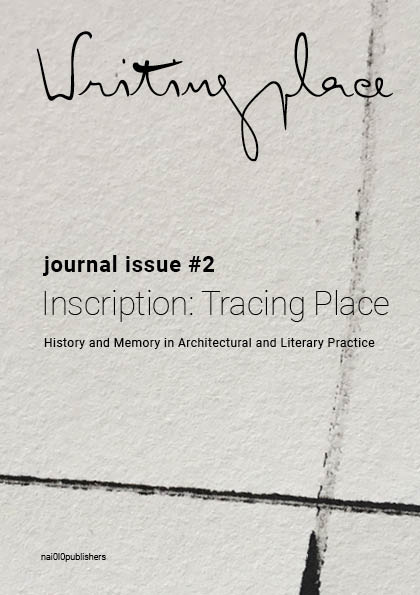Travelling through Guidebooks
Reading and Remembering Imagined Topographies of Nicosia
DOI:
https://doi.org/10.7480/writingplace.2.2653Keywords:
Guidebooks, Topography of Amnesia, Spatial Practices, Nicosia, TravellingAbstract
This article presents a journey through the divided city of Nicosia on the island of Cyprus by confronting its dominant representations in guidebooks dating back to 1960s with my personal urban experience in the northern part of the city, and placing these readings in the context of the delicate political history of the city. This approach provides an account of the extant, the constructed as well as the subjectively remembered and imagined spaces of the city. The act of reading books includes spatial and temporal activities: following the lines, stopping at certain words, jumping through paragraphs, searching for certain images and turning the pages back and forth. These activities, in the case of guidebooks, may evoke spatial memories of textures, lights, sounds, streets, buildings and people. Travelling through the different representations of sites in the guidebooks, and mapping this activity of reading, enabled me to lay out the ways in which traditional guidebooks cause a kind of topographical amnesia by privileging dominant knowledge in relation to places and decontextualizing other knowledges.
I have used this multiple reading as a critical topographical practice that can question and dismantle the fixed representations in the guidebooks. Such a critical topographical practice is indeed a practice of writing place, referring to the word’s etymological meanings: toposfor ‘place’ and graphe for ‘which writes’ or ‘is written’. This topographical practice critically and subjectively relates knowledge to place and time. It offers the possibility for me – as a traveller and researcher – to temporarily appropriate real spaces and sustain other future spatial possibilities. With the following pieces of writing about sites in Nicosia, I propose possible but partial narratives of places, which are alternative to the officially acclaimed interpretations present in the guidebooks. My alternative narratives of places offer imagining the ground of the controlled buffer zone as unfixable, dead ends as spaces resisting dichotomies of centre-margin, public-private, and local-occupier, and envisioning the horizon as a continuous extension of boundaries.
References
Bakshi, A. ‘A Shell of Memory: The Cyprus Conflict and Nicosia’s Walled City’, Memory Studies, 5: 4 (2012), 479-496
Braidotti, R. Nomadic Subjects: Embodiment and Sexual Difference in Contemporary Feminist Theory (New York: Columbia University Press, 2011[1994])
Bryant, R. and Papadakis, Y. (eds.), Cyprus and the Politics of Memory: History, Community and Conflict (New York: I.B. Tauris, 2012)
Byrant, R. ‘Partitions of Memory: Wounds and Witnessing in Cyprus’, Comparative Studies in Society and History, 54:2 (2012), 332-360
Darke, D. and Stewart, M. North Cyprus: Bradt Travel Guides - Edition 8 Guilford, (CT: The Globe Pequot Press, 2015 [1993])
Daskalaki, G. ‘Aphrodite’s Realm: Representation of Tourist Landscapes in Postcolonial Cyprus as Symbols of Modernization’, Architectural Histories, 5 (1): 8 (2017), 1-16
Dripps, R. ‘Groundwork’, in: Carol J. Burns and Andrea Kahn (eds.), Site-Matters: Design Concepts, Histories, and Strategies (London: Routledge, 2005), 59-91
Epaminondas, M. et. al., Dayanışma Evi (‘Home for Cooperation’) (Nicosia: AHDR, 2011)
Kamil Dürüst, M. Kıbrıs Rehberi (‘Cyprus Guide’) (İstanbul: Turkish Touring and Automobile Club, 1983)
Keshishian, K. Everybody’s Guide to Romantic Cyprus. 14th Edition (Nicosia: Poulias & Koniaris, 1972)
MacCannell D. and MacCannell, J., ‘Tourist Agency’, Tourist Studies, 1:23 (2001), 23-37
Mehmet, Ö. Sustainability of Microstates: The Case of North Cyprus (Salt Lake City: University of Utah Press, 2009)
Parker, R. Aphrodite’s Realm: An Illustrated Guide and Handbook to Cyprus. 4th Edition (Nicosia: Zavallis Press, 1969)
Pattie, S. ‘Refugees and Citizens: The Armenians of Cyprus’, The Cyprus Review, 25:1 (2013), 133-145
Rendell, J. The Pursuit of Pleasure: Gender, Space, and Architecture in Regency London (London: Athlone Press, 2002)
Rüstem, K. A Pocket Guide to Cyprus (Nicosia: K. Rüstem and Brother, 1960)
Rüstem, K. Güzel Kıbrıs Resimlerle (‘Beautiful Cyprus with Pictures’) (Nicosia: K. Rüstem and Brother, 1961)
Senel, A. Unfixing Place: A Study of Istanbul through Topographical Practices, doctoral dissertation, University College London, Bartlett School of Architecture, Architectural History and Theory, 2009
Urry, J. Tourist Gaze (London: Sage, 1990)
Virilio, P. ‘Topographical Amnesia’, The Vision Machine (London: BFI, 1994)



